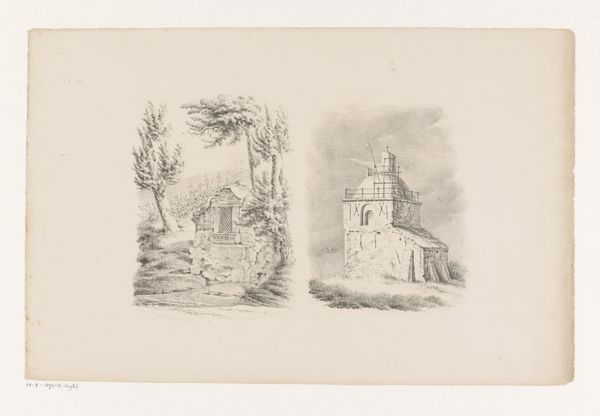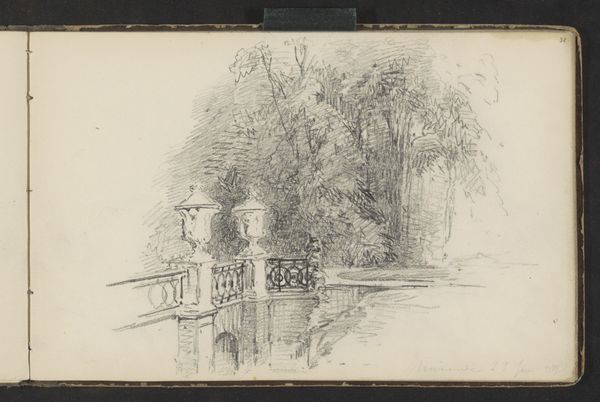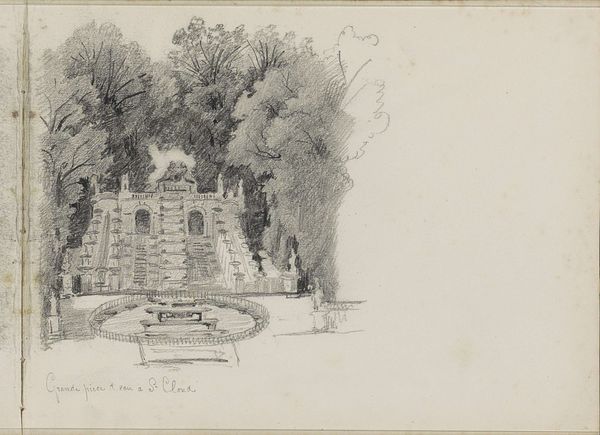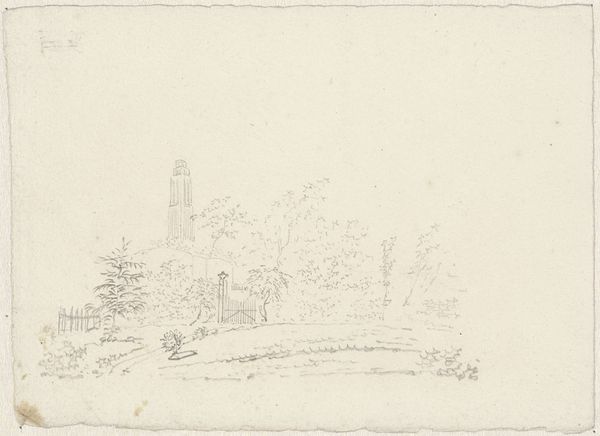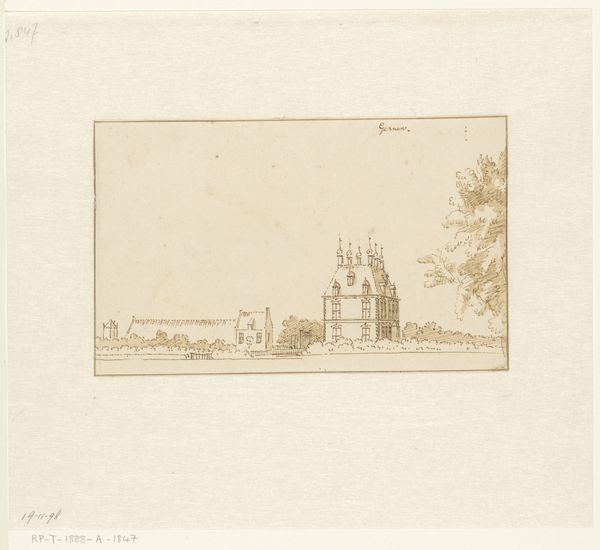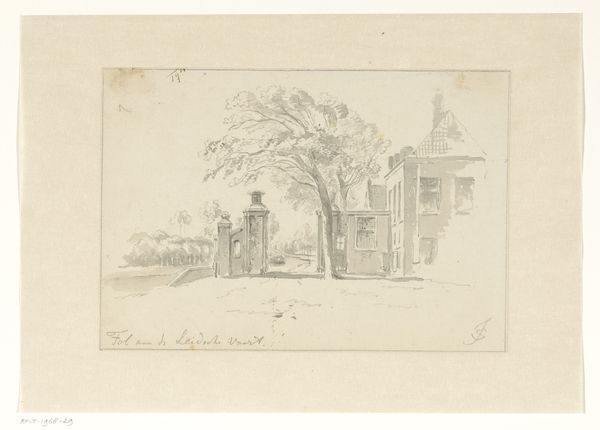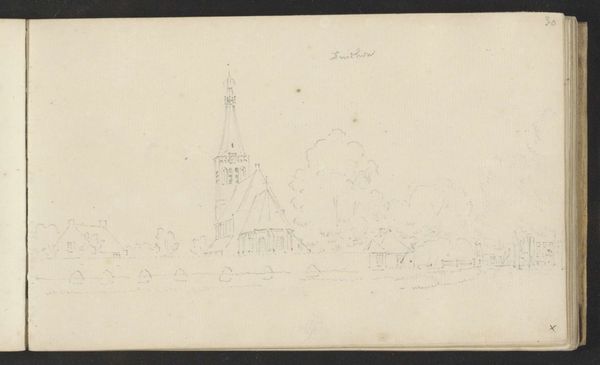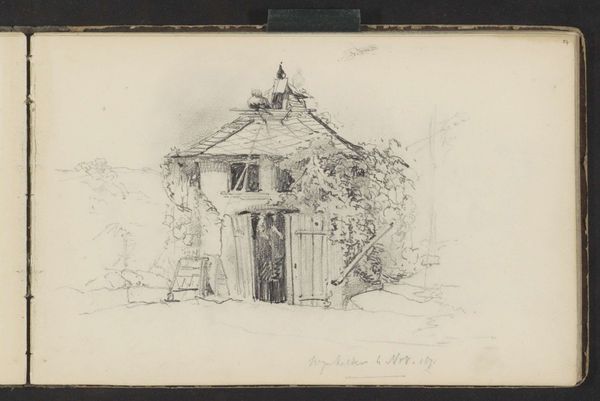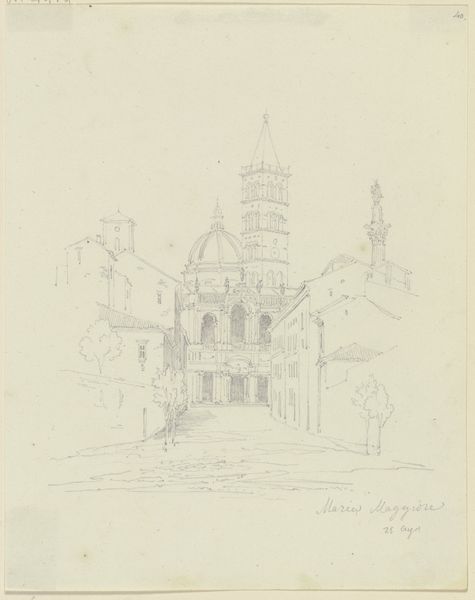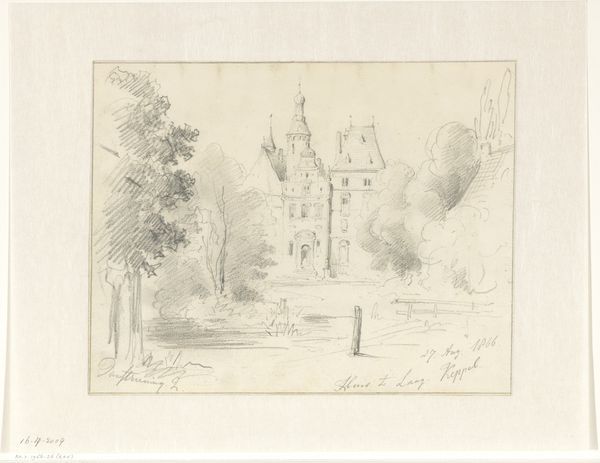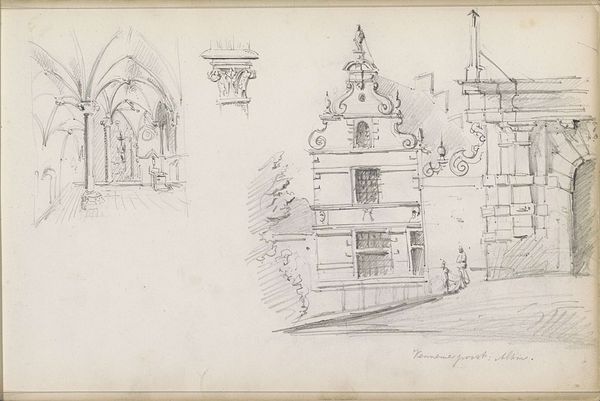
drawing, coloured-pencil
#
drawing
#
coloured-pencil
#
landscape
#
coloured pencil
#
orientalism
#
watercolor
Dimensions: sheet: 19.37 × 32.07 cm (7 5/8 × 12 5/8 in.)
Copyright: National Gallery of Art: CC0 1.0
Editor: This is Elihu Vedder's "Nile Journey, Manfalout, Through Spyglass," created around 1890 using colored pencils. There’s a dreamlike quality to it, a sense of peering into a world both familiar and distant. What captures your attention in this drawing? Curator: What strikes me is how this piece participates in the 19th-century fascination with the Orient, a phenomenon we call Orientalism. Vedder, an American artist, depicts Egypt not simply as it is, but through a "spyglass"—a filter, literally and figuratively. What do you think that filter represents? Editor: Maybe a Western perspective? A romanticized view? Curator: Precisely. This drawing, while seemingly innocent, engages with the power dynamics of the time. Western artists traveled to and represented the "exotic" East, often reinforcing existing stereotypes and colonial power structures through their art. The architecture and the very act of observing “through a spyglass” become acts of cultural appropriation, don't you think? Editor: I see what you mean. The 'spyglass' becomes less about objective observation and more about projecting Western ideas onto another culture. Does that impact how we should view art like this today? Curator: Absolutely. It’s crucial to acknowledge this context. We can appreciate Vedder's skill while also critically examining the politics of representation inherent in Orientalist art. Who is this art really *for*, and whose story does it truly tell? Editor: It makes you think about the role of art and the artist in shaping perceptions. Thanks, that's a lot to consider! Curator: Indeed! It reminds us that art doesn't exist in a vacuum, and interrogating its historical and cultural context is part of understanding it.
Comments
No comments
Be the first to comment and join the conversation on the ultimate creative platform.
